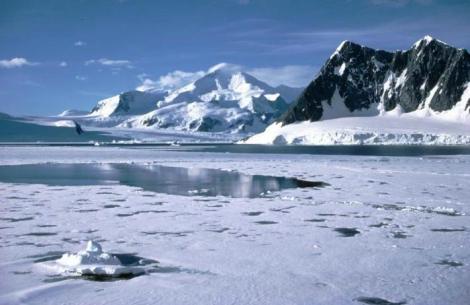Planet Earth - The Polar Regions
The Earth's poles are warming faster than the rest of the planet.
One reason is that energy is carried to the poles by large weather systems.
The Arctic includes an ocean covered by sea ice.
Arctic sea ice melts in Summer and then refreezes in Winter.
The area of Arctic sea ice is largest in March each year, and at its lowest each September.
It is reducing over time - the graph comes from the US National Snow and Ice Data Center.
Research suggests the remarkable decline of Arctic sea ice over the last century is far beyond anything seen for a long time.
The sea ice surrounding Antarctica melts almost to the coast each summer.
The winter sea ice has increased by around 1 % over the last few decades.
Here is an outline of what is happening in the seas around Antarctica:
Seawater does not freeze until around minus 2 degrees C because it is salty.
Seawater does not freeze until around minus 2 degrees C because it is salty.
This effect of salt, of course, is used to help defrost roads.
The meltwater off Antarctica’s ice sheets is freshwater.
Freshwater has a low density, so it forms a layer on top of the sea.
Freshwater freezes (of course) at zero degrees C.

The top layer of fresh water freezes more easily than normal seawater.

The top layer of fresh water freezes more easily than normal seawater.
Also wind-chill helps to freeze that top layer.
So there is more winter sea ice now.
For a useful comparison of Antarctic and Arctic sea ice follow this link……
For a useful comparison of Antarctic and Arctic sea ice follow this link……
